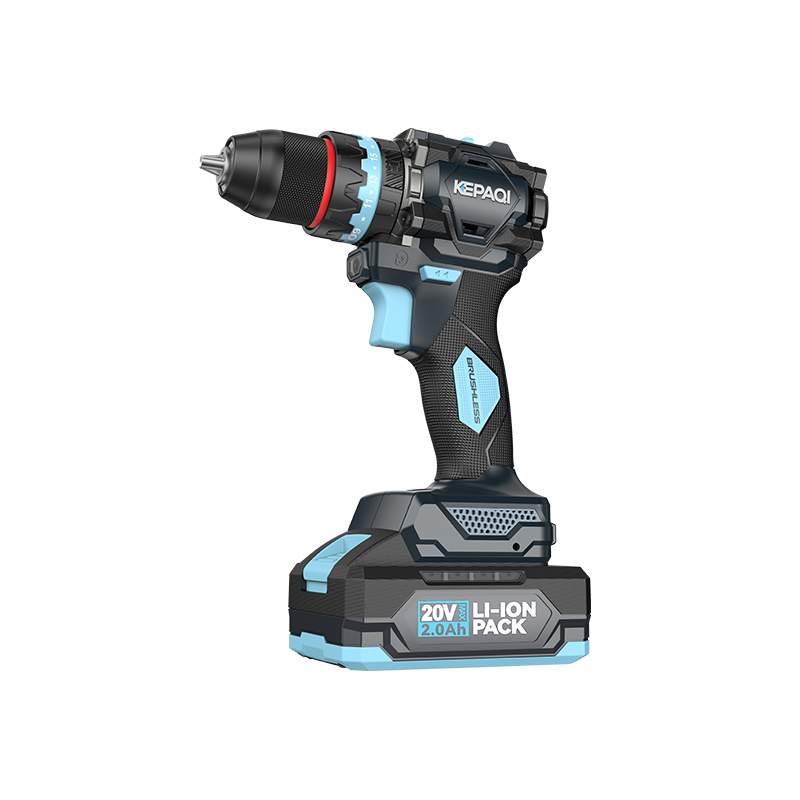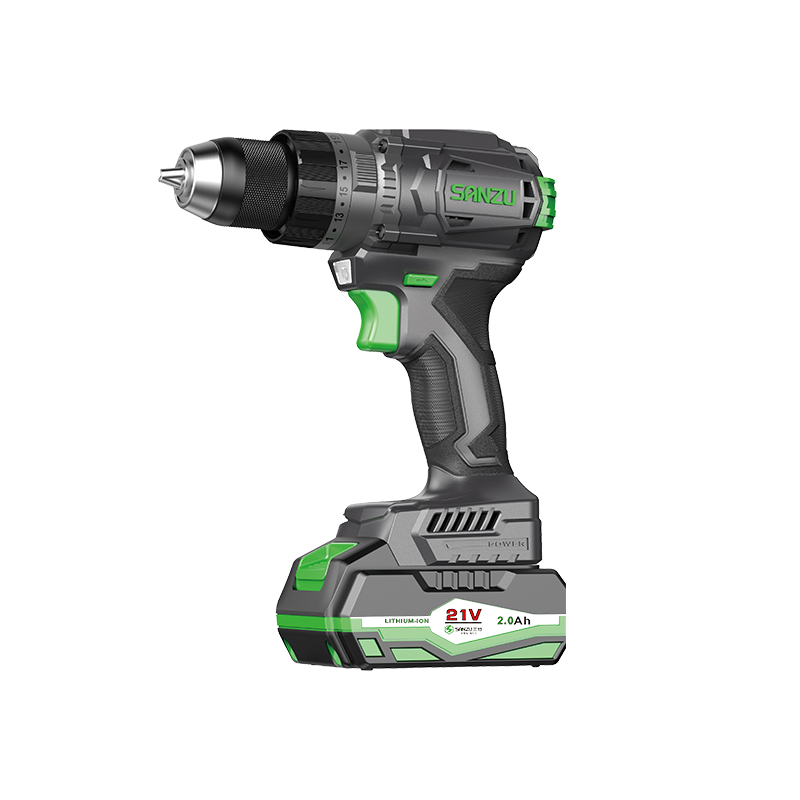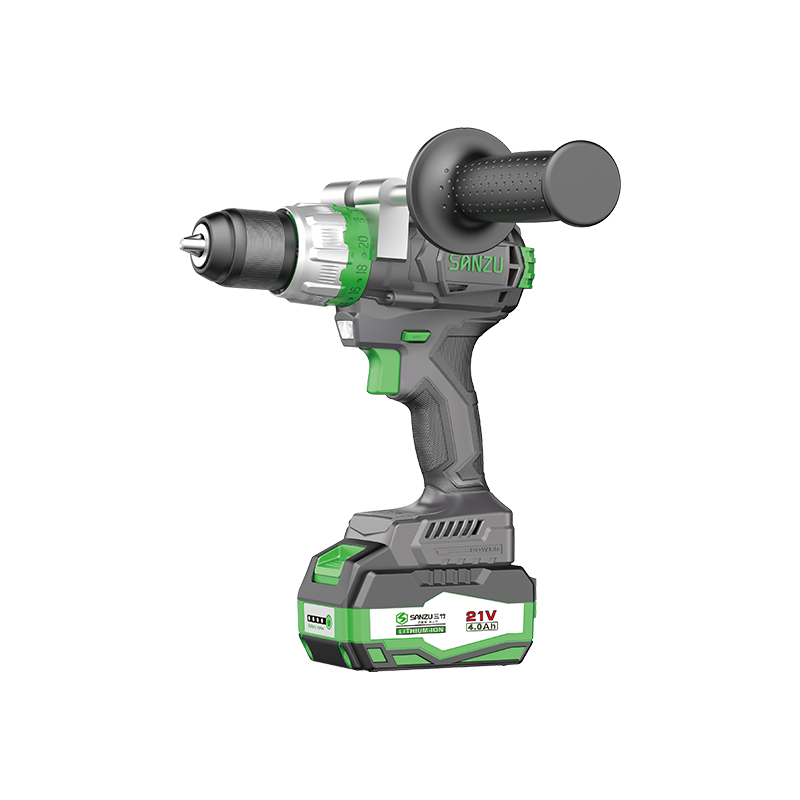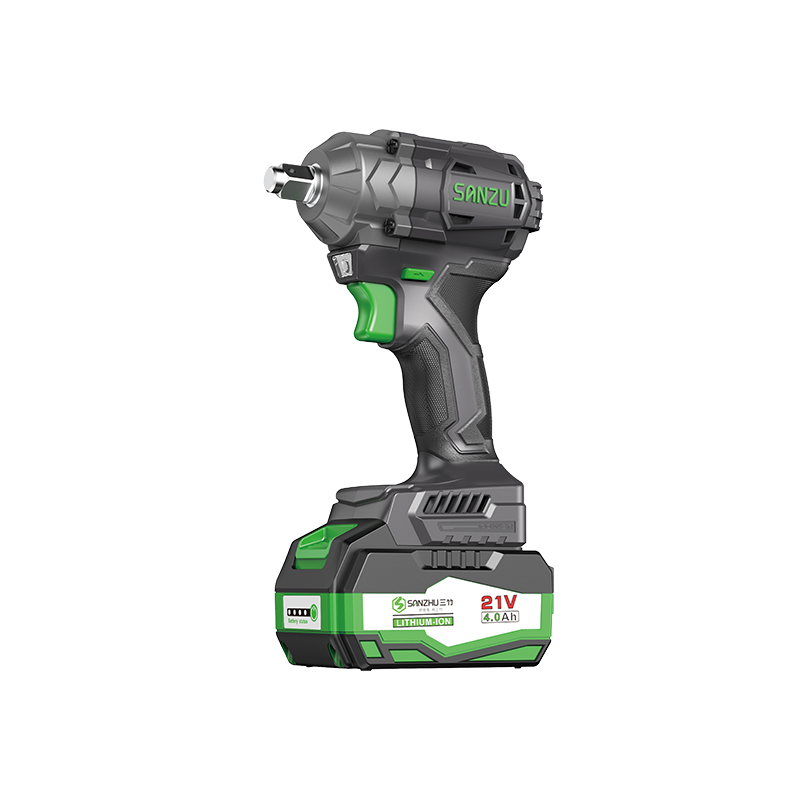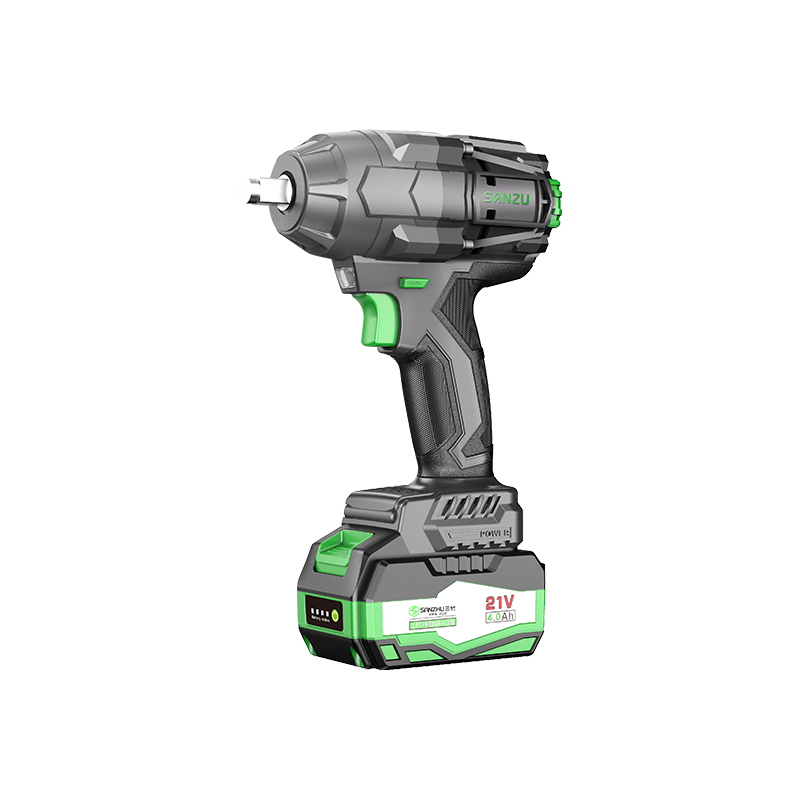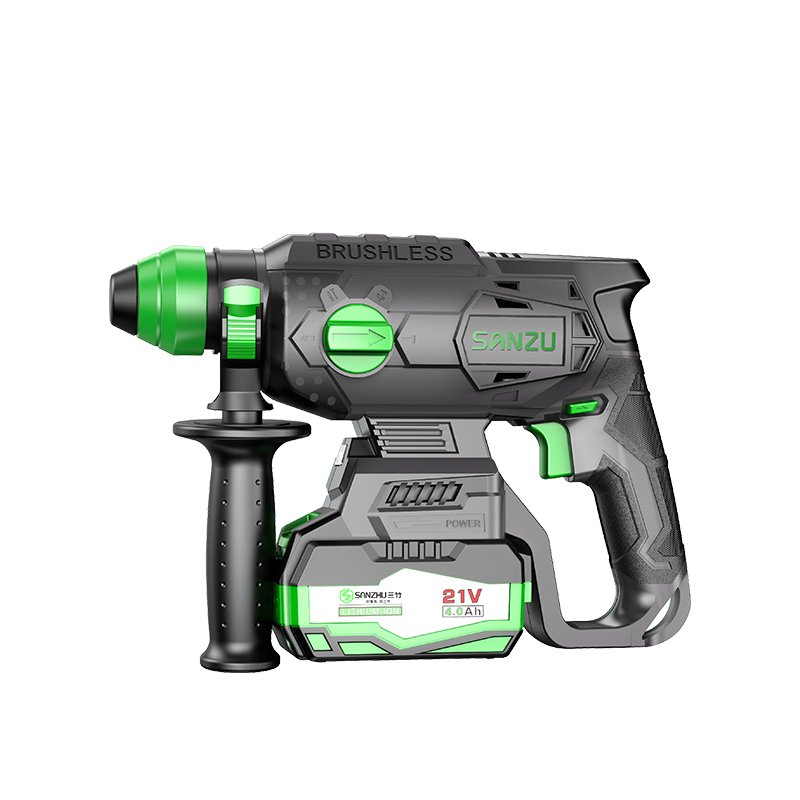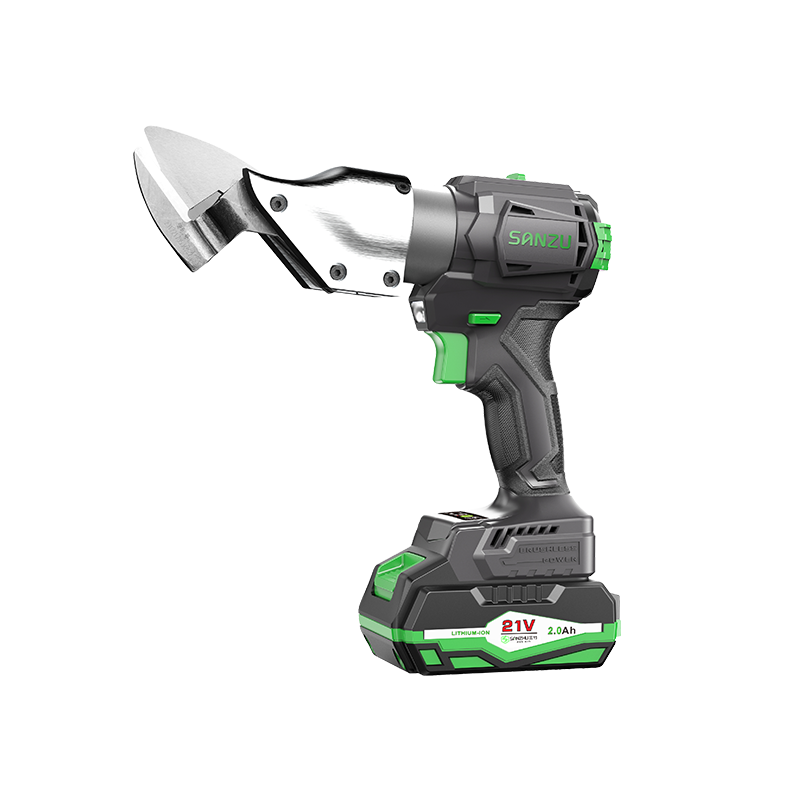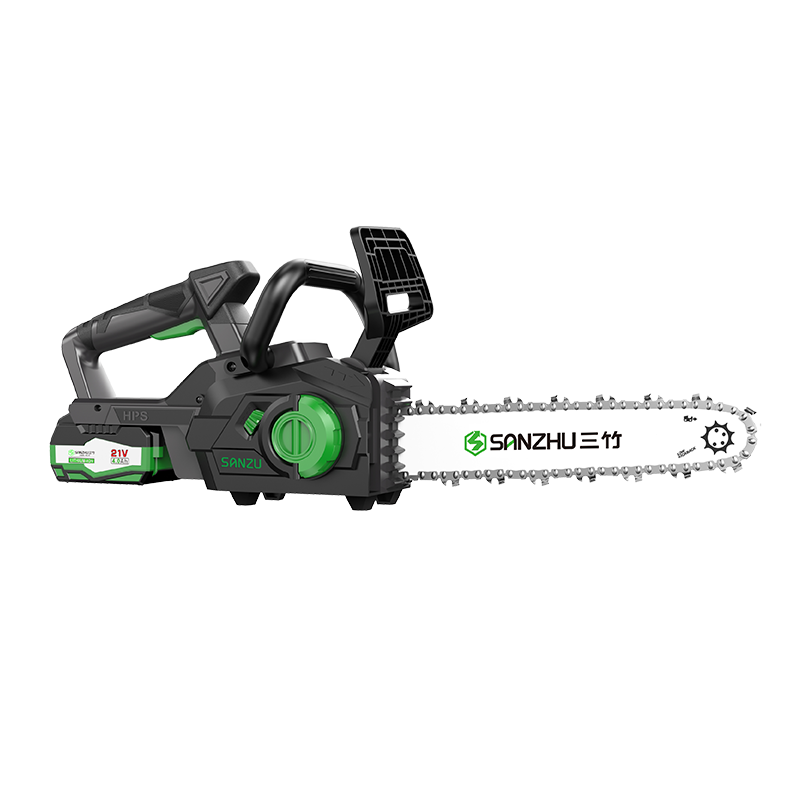Is the Cordless Chainsaw or the Gas Chainsaw the Right Tool for the Job?
Introduction
In the world of forestry, arboriculture, and home maintenance, the chainsaw is an indispensable tool. For a long time, the Gas Chainsaw has been the dominant force for heavy-duty cutting tasks and felling trees, earning the trust of professionals with its powerful internal combustion engine and seemingly unlimited runtime. It represents raw, unconstrained power. However, in recent years, a tool revolution has been quietly taking place, driven by the rapid advancements in battery technology, particularly lithium-ion. The Cordless Chainsaw is rapidly emerging as a cleaner, quieter, and simpler alternative, capturing market share from homeowners to light professional users. They are redefining the standard for portable cutting tools with instant starting and minimal maintenance requirements.
What Exactly is a Cordless Chainsaw?
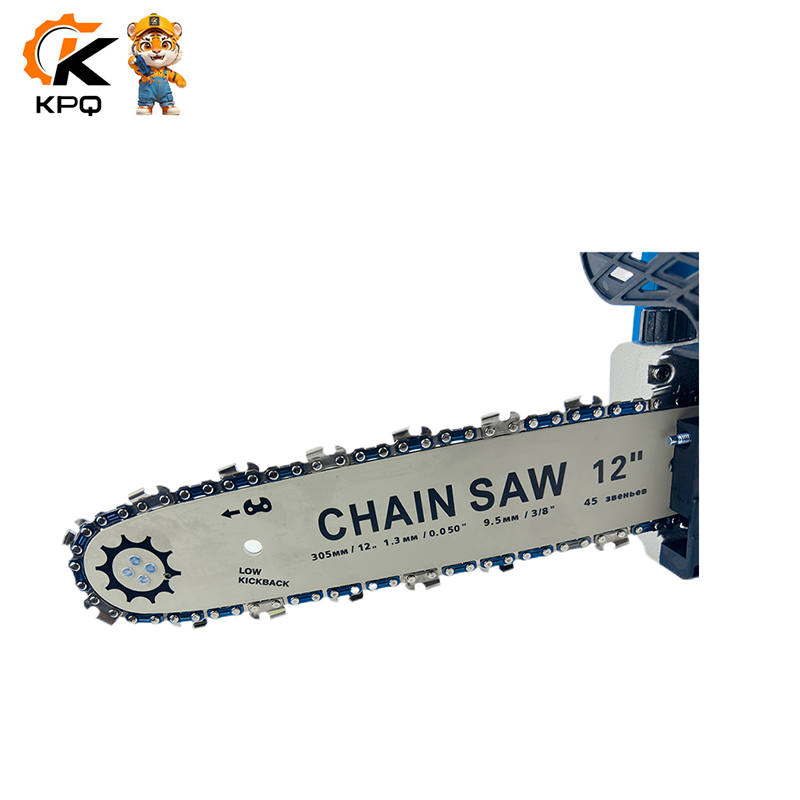
Defining a Cordless Chainsaw (Battery-Powered)
A Cordless Chainsaw is a cutting tool powered by a rechargeable lithium-ion battery pack. Unlike traditional gas models that rely on an internal combustion engine, the cordless chainsaw uses a highly efficient direct current (DC) motor to drive the chain. The core principle is the conversion of chemical energy stored in the battery into electrical energy, which the motor then converts into mechanical energy, resulting in a quiet, clean cutting operation. This design eliminates the need for fuel, pull cords, and complex carburetors, greatly simplifying the operating process. Key internal components include:
- Lithium-Ion Battery Pack: Provides a high-energy-density power source, usually composed of multiple cells connected in series, which determines the voltage and amp-hours (Ah).
- Brushless Motor: The core technology in modern cordless chainsaws. Brushless motors replace traditional carbon brushes with an electronic controller, reducing friction and heat loss, which significantly improves energy efficiency, extends runtime, and increases motor lifespan.
- Electronic Control Board: Manages the battery's power output, protects the motor from overload or overheating, and ensures that cutting torque is maximized when needed.
Explaining the Different Battery Voltages Available (e.g., 20V, 40V, 80V)
The voltage rating of a cordless chainsaw is the key indicator of its potential power and torque. The available voltage platforms on the market vary significantly and directly impact the chainsaw's suitable applications.
| Voltage Platform (V) |
Typical Application Range |
Power and Torque |
Battery Amp-Hour (Ah) Range |
Energy Output Characteristics |
| Low Voltage (20V - 36V) |
Light trimming, yard chores, shrub clearing. |
Lower. Suitable for fast cutting of small branches and softwoods. |
2.0 Ah - 5.0 Ah |
Focuses on lightweight design and convenience, with relatively shorter runtime. |
| Mid Voltage (40V - 60V) |
Moderate homeowner use, clearing storm debris, preparing firewood. |
Medium. Capable of handling hardwood with diameters of 10 cm - 25 cm. |
4.0 Ah - 8.0 Ah |
The balance point between performance and runtime; a market mainstream. |
| High Voltage (80V or higher) |
Heavy homeowner use, property maintenance, light professional use. |
Higher. Competes with small gas models, offering stronger torque. |
4.0 Ah - 12.0 Ah |
Power is close to that of a Gas Chainsaw, but still limited by the total battery energy. |
Precise Relationship Between Battery Amp-Hours (Ah) and Runtime: Amp-hours (Ah) represent the battery’s capacity to store charge. Voltage and Ah together determine the battery’s total energy (Wh = V * Ah). At a given voltage platform, a higher Ah number means a longer theoretical runtime. For example, a 40 V 6.0 Ah battery, with an energy capacity of 240 Wh, will generally provide a longer cutting duration than a 40 V 4.0 Ah battery (160 Wh).
Highlighting Typical Bar Lengths and Their Relation to Cutting Capacity
Cordless Chainsaw bar length dictates the maximum diameter that the saw can safely and effectively cut. Due to the limitations of battery power, cordless bars are usually concentrated in smaller sizes to ensure the motor is not overloaded.
| Typical Bar Length (Inches) |
Max Effective Cutting Diameter |
Best Suited Tasks |
Common Voltage Platform |
| 8 - 12 Inches |
10 cm - 20 cm |
Pruning limbs, shrub clearing, light yard work. |
Low Voltage (20 V - 36 V) |
| 14 - 16 Inches |
25 cm - 30 cm |
Medium branch clearing, storm debris cleanup, occasional felling. |
Mid to High Voltage (40 V - 80 V) |
| 18 Inches |
30 cm - 35 cm |
Heavy homeowner or property maintenance. |
High Voltage (60 V or higher) |
Detailed Discussion: A bar's effective cutting capacity is typically about 80% of its length. For a Cordless Chainsaw, forcing a bar that is too long will cause the motor to frequently enter overload protection mode during cutting, thereby reducing efficiency and shortening battery life. Therefore, the bar length must be precisely matched to the motor's torque output. Advantages and Limitations of the Cordless Chainsaw Detailed Advantages:
- Instant Start: No pull cord needed; the saw starts with the press of a switch, eliminating the frustration of cold-starting a gas chainsaw.
- User-Friendly: No need to mix fuel; simply insert the battery.
- Low Noise: Operates much quieter than gas models, making it ideal for use in residential areas or noise-sensitive zones.
- Zero Emissions: Does not produce exhaust fumes while running, making it environmentally cleaner and theoretically allowing use in well-ventilated indoor spaces.
- Low Maintenance: No spark plugs, carburetors, or filters to maintain; upkeep is limited to the chain and bar.
Detailed Limitations:
- Limited Runtime: The energy stored in the battery is finite; heavy-duty work requires frequent battery swaps.
- Peak Power: Even high-voltage models generally cannot match the sustained peak power and torque of professional Gas Chainsaws.
- Battery Dependence: Battery health, charging speed, and performance degradation in cold temperatures all impact the tool's availability.
Application of Brushless Motor Technology in Cordless Chainsaws Brushless technology is key to the performance leap in Cordless Chainsaws. The benefits include:
- Higher Efficiency: Less energy is wasted as heat due to reduced friction, potentially extending the runtime by 20% - 50% with the same battery charge.
- Increased Torque: The electronic control system can manage power more precisely, quickly boosting torque when the chain meets resistance, mimicking the "burst" power of a gas engine.
- Longer Lifespan and Reliability: Eliminates the problem of carbon brush wear, reducing the number of consumable parts that need replacement.
In short, the Cordless Chainsaw is a modern cutting tool that trades extreme power and unlimited run-time for unparalleled convenience, ease of use, and a clean, quiet operation.
What Exactly is a Gas Chainsaw?
Defining a Gas Chainsaw (Engine-Powered)
A Gas Chainsaw is a cutting tool driven by an internal combustion engine, typically a two-stroke or four-stroke engine. They are the workhorses of traditional forestry and logging operations. The core operating principle is the use of a controlled explosion created by burning a mixture of gasoline and oil (or pure gasoline, depending on the engine type) to drive a piston. This ultimately transmits immense torque and high speed to the chain via a clutch and gear system. This design allows the Gas Chainsaw to deliver a superior power-to-weight ratio and uninterrupted, sustained performance. Engine Types:
- Two-Stroke Engine: The majority of gas chainsaws on the market use this type. They are simple in construction, lightweight, and capable of generating high power output from a small displacement. However, they require pre-mixing fuel and lubricant.
- Four-Stroke Engine: Less common, typically used in specific models. They burn pure gasoline, have a separate oil reservoir, resulting in cleaner emissions and slightly lower noise, but they are generally heavier and more complex.
Explaining the Different Engine Sizes (CCs) and Their Power Output
Gas Chainsaw engine displacement (Cubic Centimeters, CCs) is the definitive standard for measuring its power and cutting capacity. The larger the displacement, the higher the engine's potential horsepower, which translates to greater cutting torque and chain speed.
| Displacement Range (CCs) |
Typical Power Range (HP/kW) |
Applicable Users and Tasks |
Bar Length Range (Inches) |
Power Output Characteristics |
| Light-Duty (20 - 40 CCs) |
1.0 - 2.5 hp (0.75 - 1.85 kW) |
Homeowners, light trimming, clearing small trees. |
12 - 16 Inches |
Easy to start, lightweight, but lower torque reserve. |
| Mid-Duty (40 - 60 CCs) |
2.5 - 4.5 hp (1.85 - 3.35 kW) |
Heavy homeowners, farm/ranch maintenance, clearing large storm debris. |
16 - 20 Inches |
Good balance of power and weight, highly versatile. |
| Professional (60 CCs and up) |
4.5 hp - 8.0+ hp (3.35 kW - 6.0+ kW) |
Professional loggers, heavy commercial use, large-scale property clearing. |
20 - 36+ Inches |
Extremely high power-to-weight ratio, capable of prolonged handling of large-diameter hardwood. |
Detailed Analysis: High-displacement Gas Chainsaws can maintain a constant high RPM and torque when cutting large-diameter hardwood, making them less prone to "getting bogged down" or experiencing sharp drops in speed. Their design emphasizes durability and reliability under high load.
Highlighting Typical Bar Lengths and Their Relation to Cutting Capacity
Due to their powerful engine output, Gas Chainsaws are capable of driving longer, more specialized bars to handle any size of timber.
| Typical Bar Length (Inches) |
Max Effective Cutting Diameter |
Best Suited Tasks |
Common Displacement Range |
| 14 - 16 Inches |
25 cm - 30 cm |
Shrub clearing, firewood preparation. |
Light-Duty (30 - 40 CCs) |
| 18 - 20 Inches |
35 cm - 40 cm |
General felling, medium tree removal. |
Mid-Duty (40 - 55 CCs) |
| 24 Inches and up |
45 cm - 60 cm |
Professional logging, handling large-diameter logs over 45 cm. |
Professional (60 CCs and up) |
Detailed Discussion: Professional-grade Gas Chainsaws can be equipped with 36 inch or even longer bars to achieve single-pass cuts on massive logs, a domain unreachable by Cordless Chainsaws. The chainsaw model's power must be proportional to the bar length to ensure optimal cutting speed and efficiency. Advantages and Limitations of the Gas Chainsaw Detailed Advantages:
- Unmatched Power Output: Delivers the highest torque and chain speed on any wood type.
- Strong Sustained Performance: Can work without interruption as long as there is fuel, making it ideal for long-duration, high-load professional tasks.
- Versatility and Durability: Capable of driving more specialized attachments, and professional models often feature durable metal construction for harsh working conditions.
Detailed Limitations:
- Difficult to Start: Requires physical effort to pull the cord, and cold starts can be challenging, demanding significant physical exertion.
- High Noise and Vibration: Generates immense noise (often exceeding 100 dB) and intense vibration during operation.
- Heavy Maintenance: Requires regular cleaning and replacement of spark plugs, carburetors, and filters, and necessitates precise fuel mixing.
- Fuel Handling and Storage: Requires purchasing and storing gasoline, mixing it with oil at the correct ratio, and involves risks associated with fuel spills and storage safety.
- Emission Issues: Two-stroke engines are significant sources of air pollutants.
Professional Gas Chainsaw Anti-Vibration and Ergonomic Design To counter the challenges of high vibration and extended operation, professional Gas Chainsaws invest heavily in ergonomics:
- Professional Anti-Vibration Systems: Typically utilize steel springs or rubber dampeners to isolate engine vibration from the handles and the operator, significantly reducing hand and arm fatigue.
- Balanced Design: Optimizes the chainsaw's center of gravity to feel lighter during operation, reducing operator strain.
In summary, the Gas Chainsaw is a tool designed for high intensity, long duration, and uncompromising power. They are the tools of the professional logger, but the operator must accept the challenges of high maintenance, high noise, and environmental impact.
How Do Cordless Chainsaws and Gas Chainsaws Differ in Key Performance Areas?
Power and Cutting Efficiency
| Feature |
Cordless Chainsaw |
Gas Chainsaw |
Key Difference |
| Power Source |
Lithium-ion battery (V * Ah = Wh) |
Internal combustion engine displacement (CCs) and Horsepower (HP/kW) |
Energy conversion efficiency and energy density. |
| Peak Power |
Power is limited by the battery's maximum discharge current. High-voltage models (60 V and up) can briefly deliver power near small gas models. |
Extremely high, professional models can easily reach 4.0 - 8.0 hp, with unlimited burst capability. |
Gas Chainsaw dominates in absolute power. |
| Torque and Speed |
Torque increases sharply when the motor speed drops (cutting hardwood), but duration is limited. |
Torque is stable and sustained, capable of maintaining high RPM (10,000 - 14,000 RPM) for long periods. |
Gas Chainsaw has a stronger torque reserve and is less likely to bog down. |
| Cutting Efficiency |
Excellent for quick cuts in wood under 30 cm in diameter, but cutting speed slows down during prolonged heavy loads. |
Superior, capable of cutting wood of any diameter and density at a constant, high rate. |
Gas Chainsaw is suited for commercial and large-scale logging. |
Discussing the Best Suited Tasks: The Cordless Chainsaw is best suited for quick trimming, clearing fallen small to medium trees, and scenarios that require frequent starting and stopping. The Gas Chainsaw is the only viable option for heavy-duty logging, tackling extra-large diameter hardwood, and continuous work for many hours.
Portability, Weight, and Maneuverability
| Feature |
Cordless Chainsaw |
Gas Chainsaw |
Key Difference |
| Average Weight |
Lighter. Typically 4.5 kg - 6.5 kg (with battery). |
Heavier. Typically 5.5 kg - 9.0 kg (full of fuel). |
Cordless Chainsaw is significantly lighter and easier to handle. |
| Transportation & Storage |
Extremely convenient. No risk of fuel leaks, can be stored vertically, and is more compact. |
Must be careful, fuel must be drained or stored, and it may emit odors during transport. |
Cordless Chainsaw has clear advantages in home storage and transportation. |
| High-Altitude Work |
Clear advantage. Lightweight design and instant start make working at heights or in tight spaces safer and easier. |
Difficult to handle. Weight and cold-starting issues cause major inconvenience during elevated operation. |
Cordless Chainsaw has a huge advantage in arboreal pruning. |
Runtime and Fuel/Energy Refilling
| Feature |
Cordless Chainsaw |
Gas Chainsaw |
Key Difference |
| Runtime |
Limited. A 6.0 Ah battery may only last for 15 - 30 minutes of continuous cutting under high load. |
Unlimited. Can work continuously as long as it is refueled. A full tank may last 45 minutes to 1.5 hours. |
Gas Chainsaw has an overwhelming advantage in sustained operation. |
| Energy Refilling |
Charging. Takes 30 minutes to several hours. Requires an electrical supply. |
Refueling. Takes 1 minute, and work resumes immediately. |
Gas Chainsaw is much more efficient for energy resupply at the worksite. |
| Endurance Strategy |
Relies on rotating multiple batteries. Requires numerous spare batteries to sustain long working periods. |
Relies on fuel cans, which are easy to carry and store. |
The density and convenience of energy storage differ fundamentally. |
Maintenance Requirements and Complexity
| Feature |
Cordless Chainsaw |
Gas Chainsaw |
Key Difference |
| Engine Maintenance |
Extremely Low. Brushless motors are virtually maintenance-free. |
Very High. Requires regular replacement of spark plugs, cleaning/replacement of air and fuel filters, and carburetor tuning. |
The fundamental difference between complex machinery and simple electronic components. |
| Fuel System Maintenance |
None. |
Fuel must be drained for long-term storage to prevent stale fuel from clogging the carburetor. |
Cordless Chainsaw eliminates the hassles of fuel storage and degradation. |
| General Maintenance |
Chain and guide bar cleaning, chain oil replenishment, proper battery storage and charging. |
Chain and guide bar cleaning, chain oil replenishment, clutch and anti-vibration system inspection. |
Both require routine maintenance of the cutting components. |
| Start-up Convenience |
Instant. Starts with the press of a button or switch. |
Difficult. Requires a pull cord, involves steps like using the choke and decompression valve; cold starts are particularly challenging. |
Cordless Chainsaw has a significantly lower barrier to operation. |
Noise Level and Vibration Control
| Feature |
Cordless Chainsaw |
Gas Chainsaw |
Key Difference |
| Noise Level |
Low. Averaging around 90 dB - 102 dB (at 1 meter from the user). |
Extremely High. Averaging around 105 dB - 120 dB (at 1 meter from the user). |
Cordless Chainsaw significantly reduces the risk of hearing damage and neighborhood disruption. |
| Vibration |
Very low. Vibration has minimal impact on user fatigue due to balanced motor and lower power. |
High. Even with anti-vibration systems, prolonged high-intensity work can cause hand fatigue and Raynaud's phenomenon. |
Cordless Chainsaw is better suited for extended periods of handling. |
Environmental Impact and Health
| Feature |
Cordless Chainsaw |
Gas Chainsaw |
Key Difference |
| Exhaust Emissions |
Zero Emissions. Environmentally friendly and can be used in well-ventilated semi-enclosed spaces. |
High Pollution. Two-stroke engines are major sources of unburned hydrocarbons (HC), carbon monoxide (CO), and nitrogen oxides (NOx). |
Cordless Chainsaw is significantly cleaner and healthier. |
| Health Risks |
Primary risks are noise and accidental injury. No risk of inhaling exhaust fumes. |
In addition to noise and injury, there is the risk of inhaling gasoline fumes and combustion exhaust. |
Gas Chainsaw operation requires more respiratory protection. |
Which Chainsaw is Right for You Based on Your Needs?
Considerations for Homeowners (Light Use, Convenience)
Homeowners typically handle light-to-moderate cutting tasks in their yards and gardens, such as trimming branches, clearing small storm debris, or preparing firewood. In this scenario, the benefits of the Cordless Chainsaw are maximized.
| Key Homeowner Need |
Recommended Choice |
Detail Considerations |
Recommended Spec Reference |
| Start-up Convenience |
Cordless Chainsaw |
Homeowners do not want to struggle with pull cords or complex cold-start procedures. Instant starting significantly increases the willingness to use the tool. |
Voltage: 40 V - 60 V |
| Noise and Neighbor Relations |
Cordless Chainsaw |
Residential areas are noise-sensitive, and a low-noise saw avoids neighborhood disruption. |
Bar: 14 - 16 Inches |
| Maintenance and Storage |
Cordless Chainsaw |
Maintenance simple, no need to handle mixed fuel, storage is odor-free with no fuel leak risks. |
Battery: 4.0 Ah or higher |
| Applicable Scenarios |
Cordless Chainsaw |
Small branches (10 cm - 25 cm diameter) pruning and general yard cleanup. |
Weight: 4.5 kg - 5.5 kg |
Summary Advice: For non-professional users who use the tool less than twice a week and whose cutting tasks do not exceed 30 cm in diameter, the Cordless Chainsaw is the most ideal and hassle-free option.
Considerations for Professionals (Heavy Use, Power)
Professional loggers, forestry workers, or large property owners need to handle large-diameter timber, and require a tool with uncompromising power and extreme sustained performance.
| Key Professional Need |
Recommended Choice |
Detail Considerations |
Recommended Spec Reference |
| Sustained Performance |
Gas Chainsaw |
Work hours often last for many hours, requiring immediate resumption of work by refueling, rather than waiting for charging. |
Displacement: 50 CCs and up |
| Peak Power and Torque |
Gas Chainsaw |
Must have sufficient force to cut hardwood logs over 40 cm or even 60 cm in diameter without the chain bogging down. |
Power: 3.0 hp (2.2 kW) and up |
| Cutting Speed and Efficiency |
Gas Chainsaw |
Time is money; high chain speed and strong torque ensure maximum working efficiency. |
Bar: 18 - 28 Inches |
| Environmental Adaptability |
Gas Chainsaw |
The machine must operate reliably in extreme temperatures, humidity, or dusty, harsh environments. |
Construction: Professional-grade metal construction, superior anti-vibration systems. |
Summary Advice: For users who work several hours daily, need to cut large-diameter timber, or operate in remote areas without electricity, the sustained power and high reliability of the Gas Chainsaw are irreplaceable.
Considerations for Occasional Users (Ease of Use, Functionality)
Occasional users might use the tool only a few times a year, primarily for small to medium tasks. They are most concerned about whether the tool is easy to store and whether it will start reliably when needed.
| Key Occasional User Need |
Recommended Choice |
Detail Considerations |
Recommended Spec Reference |
| Ease of Use |
Cordless Chainsaw |
Starting simple and low maintenance requirements, avoiding the frustration of a non-starting saw due to fuel issues after a year of disuse. |
Voltage: 40 V or 60 V (if greater cutting capacity is needed) |
| Functionality |
Cordless Chainsaw/Gas Chainsaw |
Cordless satisfies most small-to-medium needs; if cutting tasks occasionally involve larger wood, a light-duty Gas Chainsaw might be considered. |
Bar: 14 - 16 Inches |
| Storage Maintenance |
Cordless Chainsaw |
Simple chain cleaning and proper battery storage suffice, eliminating complex maintenance like draining fuel. |
Weight: Lighter is better for ease of lifting and handling. |
Summary Advice: If the occasional user prioritizes starting reliability, convenient storage, and low maintenance, the Cordless Chainsaw is the wiser choice. They should only consider an entry-level Gas Chainsaw if they occasionally need to tackle large tasks that exceed the capacity of cordless models.
Selection Advice for Different Scenarios
| Scenario Type |
Typical Task |
Recommended Choice |
Reasoning |
| Routine Pruning |
Trimming branches under 10 cm. |
Cordless Chainsaw |
Lightweight, manageable with one hand, low noise, easy for elevated work. |
| Firewood Preparation |
Cutting logs 20 cm - 35 cm into rounds. |
Cordless Chainsaw or Gas Chainsaw |
Cordless is sufficient for small volumes; if continuously cutting large amounts of hardwood, a Gas Chainsaw around 40 CCs is more efficient. |
| Clearing Storm Debris |
Removing large fallen trees over 35 cm. |
Gas Chainsaw |
Cordless battery life is limited. Gas Chainsaw ensures sustained power and reliability for continuous, high-intensity work and variable wood density. |
| Commercial Logging |
Continuous, daily cutting of large-diameter timber. |
Gas Chainsaw |
Must possess the highest power, longest bar, and strongest durability. |
Final Consideration:
- If your community has strict noise restrictions, or if you strongly dislike handling fuel and complex maintenance, please choose a Cordless Chainsaw.
- If you require unlimited runtime, maximum power, and the fastest cutting speed, and are willing to accept higher noise and maintenance demands, please choose a Gas Chainsaw.
What Are the Answers to Frequently Asked Questions About Cordless and Gas Chainsaws (FAQ)?
Cordless Chainsaw Q&A
Q1: Can a Cordless Chainsaw truly fell a large tree? (Depends on tree diameter and saw specifications)
A: Yes, but with limitations. High-voltage Cordless Chainsaws (e.g., 60 V or 80 V models with 16 - 18 inch bars) can fell medium trees up to 35 cm - 40 cm in diameter. However, their runtime will be very short, potentially requiring multiple charges or battery swaps. For large trees exceeding 45 cm in diameter, their power and sustained torque are insufficient, placing excessive strain on the motor and battery system, making the process far less efficient than with a Gas Chainsaw.
Q2: How can I maximize the Cordless Chainsaw's battery runtime? (Cutting technique, chain sharpness, battery care)
A: Runtime is mainly influenced by three factors:
- Chain Sharpness: This is the most crucial factor. A dull chain forces the motor to use 20% - 50% more energy to overcome resistance. Keeping the chain sharp is key to extending runtime.
- Cutting Technique: Avoid applying excessive pressure to the bar. Let the chain do the cutting work. Avoid continuous, high-load cuts; short pauses can help the motor dissipate heat and reduce power consumption.
- Battery Care:
- When using in cold weather, it is best to store the battery in a warm place and install it just before use.
- For long-term storage, the battery should be kept at 30% - 50% charge and stored in a cool, dry place.
Q3: How does the Cordless Chainsaw perform in cold environments? (Impact of low temperature on battery performance and remedies)
A: Extremely low temperatures can significantly affect the performance of lithium-ion batteries.
- Performance Degradation: The internal chemical reaction of the battery slows down in cold temperatures, leading to a temporary decrease in discharge capability (power) and total energy (runtime), potentially by 20% - 40%.
- Remedies: Try to charge the batteries indoors and only install the battery into the Cordless Chainsaw right before starting work. During breaks, keep spare batteries warm (e.g., in a jacket pocket).
Gas Chainsaw Q&A
Q4: Why is my Gas Chainsaw difficult to start? (Common troubleshooting: spark plug, carburetor, fuel mix)
A: Difficult starting (especially cold starting) of a Gas Chainsaw is typically caused by the following common issues:
- Fuel Problem: This is the most common failure.
- Using stale fuel that has been sitting for over 30 - 60 days.
- Incorrect fuel mixing ratio (for two-stroke models).
- Spark Plug Problem: The spark plug is fouled with carbon or wet with fuel, leading to poor or no ignition.
- Clogged Air Filter: A dirty air filter restricts air flow to the carburetor, resulting in an overly rich fuel-air mixture.
- Carburetor Adjustment: The high and low-speed screws may need to be readjusted, or the carburetor may be clogged by residue from old fuel.
Q5: How should I correctly mix fuel and oil? (Mixing ratio, fuel type, oil type)
A: Most two-stroke Gas Chainsaws require a precise mixture of gasoline and specialized two-stroke engine oil.
- Mixing Ratio: Common ratios are 50:1 (i.e., 50 parts gasoline to 1 part oil) or 40:1. Please always check your chainsaw manual for the exact required ratio.
- Example: For a 50:1 ratio, every 5 liters (5000 ml) of gasoline requires 100 ml of oil.
- Fuel Type: Use unleaded gasoline with an octane rating of 89 or higher. Never use gasoline with an ethanol content higher than 10%, as ethanol can damage the chainsaw's rubber parts and absorb moisture.
- Oil Type: High-quality, dedicated two-stroke engine oil must be used to ensure adequate engine lubrication and low smoke.
Q6: Does a Gas Chainsaw need adjustment at high altitude? (Necessity of carburetor tuning)
A: Yes, it often does. As altitude increases, air density decreases, resulting in less oxygen entering the engine. If the carburetor is not adjusted accordingly, the fuel mixture will become too rich, which can lead to the saw:
- Losing power.
- Smoking excessively.
- Being difficult to start.
- Fouling the spark plug easily.
When operating at significantly different altitudes, the saw typically requires "leaning out" the mixture by adjusting the high and low-speed screws on the carburetor, performed by a professional or knowledgeable user, to compensate for the thinner air. Many modern professional Gas Chainsaws feature auto-tune or environment-sensing carburetors that automatically compensate for altitude changes.
General Q&A
Q7: What is the appropriate guide bar length to choose? (Based on the diameter to be cut)
A: Selecting the bar length should follow these basic principles:
- Safety Principle: The guide bar should ideally be at least 5 cm longer than the diameter of the wood you need to cut.
- Efficiency Principle: Optimal cutting efficiency generally occurs when the cutting diameter is approximately 80% of the bar's effective length.
- Example: If you frequently cut wood 25 cm in diameter, a 16 or 18 inch bar is recommended.
- Power Matching: The bar length on a Cordless Chainsaw must not exceed the maximum recommended by the manufacturer to prevent overloading.
Q8: How often should the chain be sharpened? (Importance of sharpening for efficiency and safety)
A: Chain sharpness is paramount to a chainsaw's performance. Sharpening frequency depends on the intensity of use and the material being cut:
- Professional Use: Loggers often check and sharpen the chain every 1 - 2 hours or with every fuel refill.
- Homeowner Use: It is recommended to check before every cutting session.
- Criterion for Sharpening: When the saw begins producing powdery sawdust instead of uniform, flake-like chips, or when you need to apply pressure to the bar to cut, it's time to sharpen. A sharp chain should "feed itself" into the wood effortlessly.
Q9: What are the three most important rules for safe chainsaw operation? (Kickback, attire, grip)
A: Safe operation is vital for both Cordless Chainsaws and Gas Chainsaws:
- Prevent "Kickback": Kickback is the most dangerous situation with a chainsaw. Always avoid cutting with the upper 1/4 of the guide bar tip. Maintain a firm stance and ensure the chain brake is functioning correctly.
- Use Proper Personal Protective Equipment (PPE): Always wear chainsaw protective chaps, a safety helmet (with a face shield or safety glasses), hearing protection (especially for Gas Chainsaws), and non-slip gloves.
- Maintain a Firm "Two-Handed Grip": Always use both hands to hold the chainsaw handles, with your thumbs wrapped securely beneath the handles to form a safe, closed grip to prepare for unexpected events.

